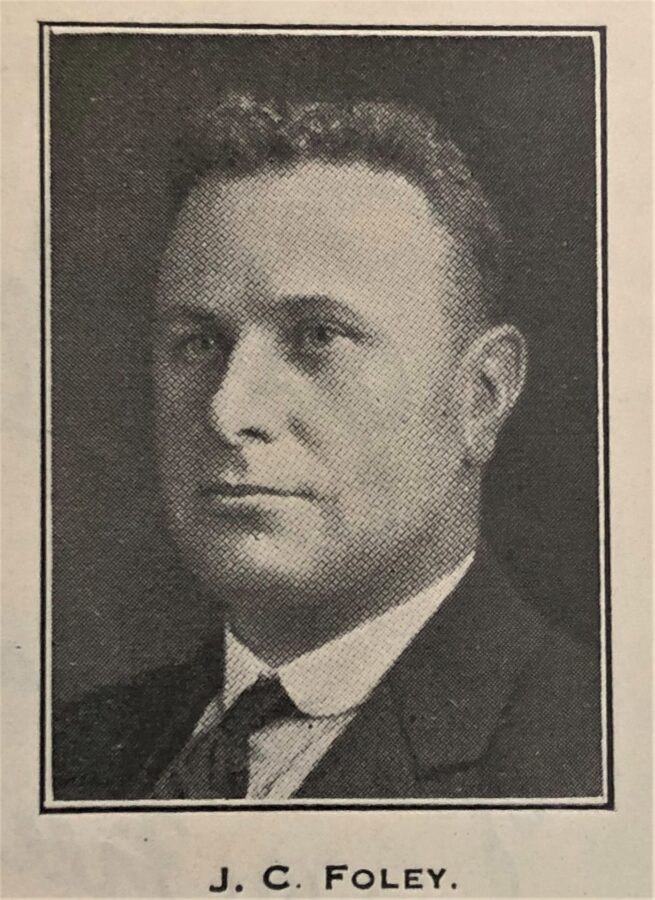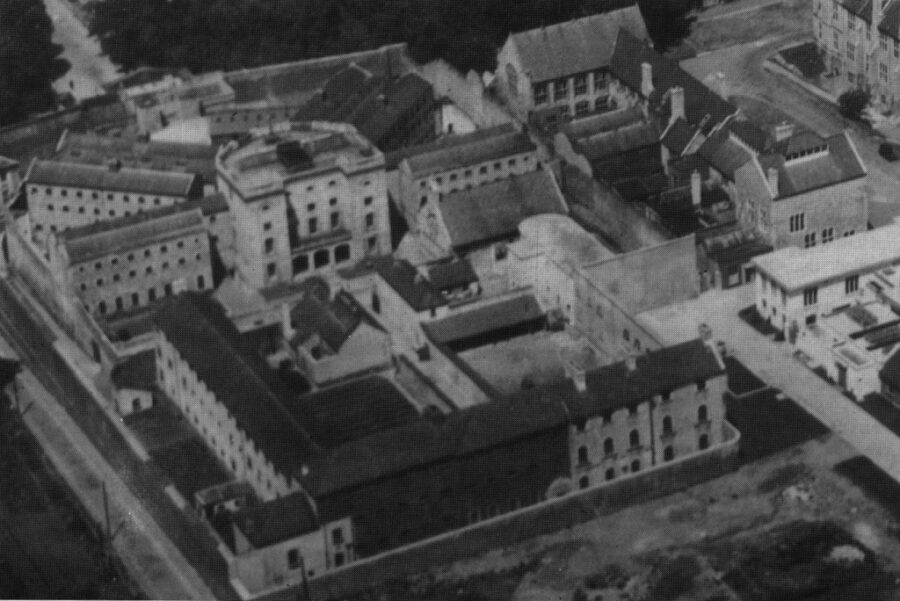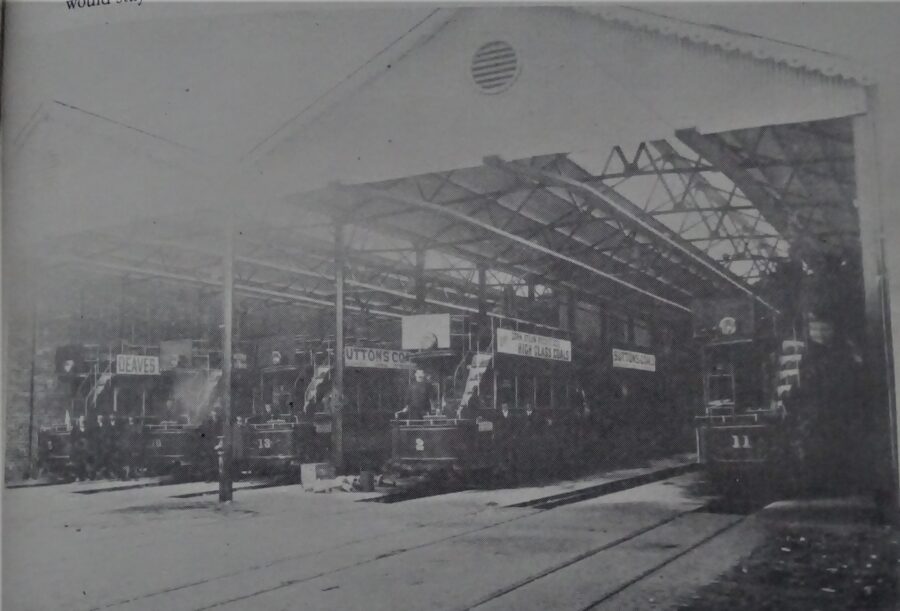
Kieran’s Our City, Our Town Article,
Cork Independent, 24 November 2022
Journeys to an Irish Free State: Commercial Optimism and New Connections
Contrasting against the escalating Civil War, the business community in Cork did what they could to manage the disruption. Indeed, an editorial in the Cork Examiner on 16 November 1922 highlights an actual revival and growth of trade with the city’s and region’s economy in the winter of 1922.
Wholesale houses of Cork during October and November 1922 witnessed their orders steadily increasing. Traders of county towns were gaining confidence in the protection afforded to property by the new Civic Guard. In addition, many traders of wholesale houses no longer went to England to make purchases due to the danger, difficulty, and cost of travel. They were content to send their orders to Cork. One of the effects of this was more employment being given to the factories – a welcome change from half-time to five days a week having taken place in some instances. For example, the manufacture of boots for the National Army troops gave much needed local employment in the boot factories of Cork. About £400,000 worth of boots were made annually in the country with the importation rate at six millions’ worth.
The Cork Examiner also focusses on other aspects, which combined to help the revival of industry in Cork. A greater number of the goods, previously carried to the country towns and to the city by rail, was conveyed by motor. It was not unusual to see hundreds of motor cars and lorries enter and depart from the city to places as far distant as Castletownbere, and districts equally remote.
The quays of Cork were busy spaces. Little steamers, sailing vessels and motor boats made their way regularly between the port and nearly all the sea coast towns of the south and west of the country. There was the large steamer of 150 tons side by side with the modest little schooner of fifteen tons. The Cork Examiner highlights that the names of the vessels were striking – St Brigid, St Michael, Alice, Young Dan.
However, car loads of goods were sometimes waiting in a queue on the quays for half the day, which added to waiting and ultimately the cost. In addition, for a horse and car to take a ton of goods to Macroom, a charge of £5 was made. The distance to Macroom by road had greatly increased due to the destruction of bridges during the Civil War. One had to get to the town in a roundabout way via Blackpool and Blarney. Road transport charges were expensive. Commercial travellers also had to pay high prices.
The Cork Examiner also highlighted that the principal retail houses of Cork were also optimistic. The extreme cold weather of the winter of 1922 compelled men and women to rush to the draper’s shops to spend some of their savings.
On the third week of November 1922, the annual general meeting of the Cork Chamber of Commerce also provided insights into the commercial world. In the annual report by its Honorary Secretary Mr M O’ Herlihy, and published in the Cork Examiner on 24 November 1922, it noted of commercial challenges; “The outbreak of Civil War, threatening our existence as a nation and as a commercial unit, has meant for our city a certain amount of isolation, which has lost for our merchants a big portion of our inland markets”.
Under the circumstances, the Chamber took the initiative in the formation of representatives of the city’s two Chambers of Commerce, Cork Employers’ Federation Ltd, and the County Cork Association of the Irish Farmers’ Union. The standing executive acted as a local advisory body to the Irish government. Representing the commercial community of the city, it dealt with all matters of the public interest such as the provision of transport facilities, the presentation of claims, commandeering etc. It has also acted in an advisory capacity on such matters as the administration and collection of income tax, road and motor licence duty.
Under the auspices of the Chamber and the Cork Industrial Development Association, in early 1922 a trade deputation visited Belgium first and then visited France to investigate the possibilities for the development of direct import and export trade between Ireland and the continent. The deputation was met by Count Gerard O’Kelly, Irish Consul, Belgium. The deputation visited the leading commercial magnates of Belgium and all the large factories in Brussels, Antwerp, Ghent, Hall, Liege and Verviers.
Dr Leon Moreau, managing director of the Compagnie Ultramarine de Commerce, visited Cork and delivered an illustrated lecture at the Pavilion cinema on Belgo-Irish trade.
Mr Leopold H Kerney, the Irish Consul based in Paris, made two visits to Cork during the year, and interviewed the directors and managers of local firms interested in promoting direct trade with the Continent. Mr Kerney successfully urged on French traders the necessity of linking up Brest and Cork, by running a direct passenger-cargo service between the two ports. There was also a Compagnie France-Irlande of which share capital could be bought.
In October 1922, Mr Kerney and twenty others came to sell their manufactures and products, others came to buy the products of Ireland and to transact merchanting by direct methods.
One of the key drivers to search for new markets was Mr John O’Callaghan Foley, President of Cork Chamber of Commerce. He noted of the French support at the annual general meeting in mid-November 1922; “I may say the French people were the first to recognise and were quite enthusiastic about it that Ireland dropped out of the United Kingdom, and they were anxious to secure some business here, and come and transact business with the people they have so much in common with”.
John was a member of the Council of the Cork Industrial Development Association and held directorships at Messrs Dowdall and Company Ltd, John Daly and Company, Ltd and the Victoria Hotel Company Ltd. He openly had interests in the development of direct foreign trade for companies such as the Canadian Government Merchant Marine, Moore and MacCormack Company Ltd, New York, Michael Murphy Ltd, Dublin and Cork, Societé De Navigation, France-Irlande, Brest, France. John was also a member of the Governing Body of University College, Cork.
Caption:
1178a. John O’Callaghan Foley, President of Cork Chamber of Commerce 1922 (source: National Library of Ireland, Dublin).


